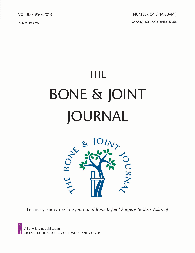
FOOT & ANKLE
Polylevolactic acid vs. titanium screws for management of unstable syndesmosis injuries
Bone Joint J. 2014 Apr;96-B(4):548-54186 patients with an unstable distal tibiofibular syndesmosis injury from a bi- or tri-malleolar fracture were randomized to receive management through either a bioabsorbable or metallic screw. Patients were followed-up for a mean 55.8 months in comparing outcomes between the two screw types. Bioabsorbable, polylevolactic acid (PLLA) screws were associated with increased ankle dorsiflexion and plantar-flexion. Functional outcome was overall similar between groups, although the "ability to work" subscale of the Baird score favoured PLLA screws. Complications were more common with PLLA screws, particularly foreign body reactions. Three cases of heterotopic ossification were recorded in the PLLA screw group.
Unlock the full ACE Report
You have access to {0} free articles per month.Click below to unlock and view this {1}
Unlock NowCritical appraisals of the latest, high-impact randomized controlled trials and systematic reviews in orthopaedics
Access to OrthoEvidence podcast content, including collaborations with the Journal of Bone and Joint Surgery, interviews with internationally recognized surgeons, and roundtable discussions on orthopaedic news and topics
Subscription to The Pulse, a twice-weekly evidence-based newsletter designed to help you make better clinical decisions
Exclusive access to original content articles, including in-house systematic reviews, and articles on health research methods and hot orthopaedic topics
Or upgrade today and gain access to all OrthoEvidence content for just $1.99 per week.
Already have an account? Log in


Subscribe to "The Pulse"
Evidence-Based Orthopaedics direct to your inbox.
{0} of {1} free articles
Become an OrthoEvidence Premium Member. Expand your perspective with high-quality evidence.
Upgrade Now












































































